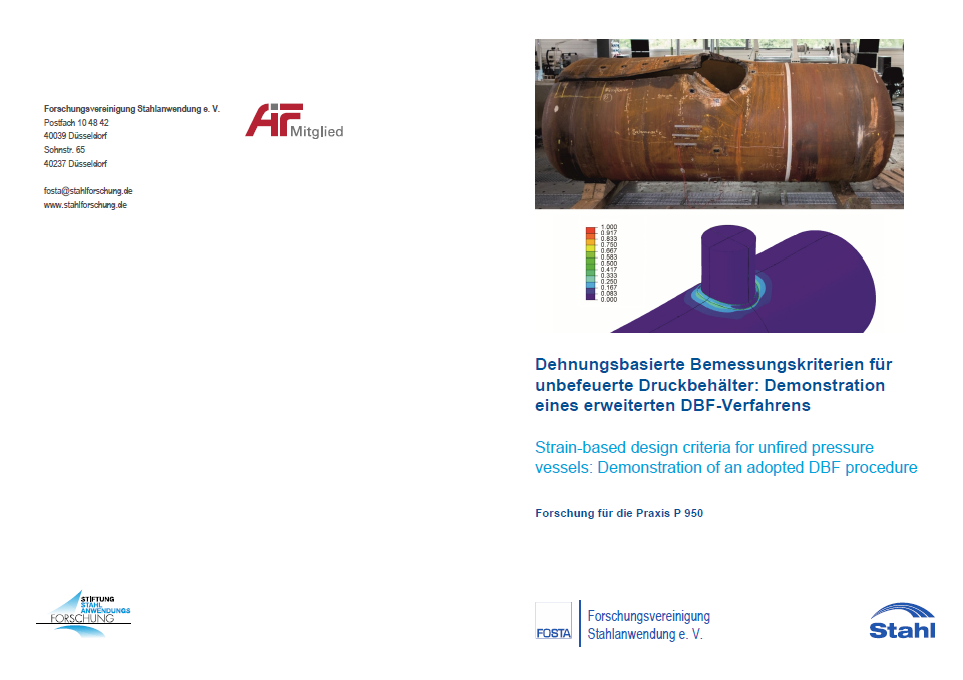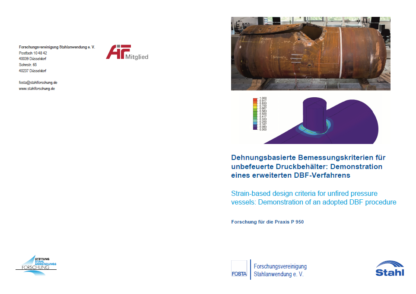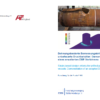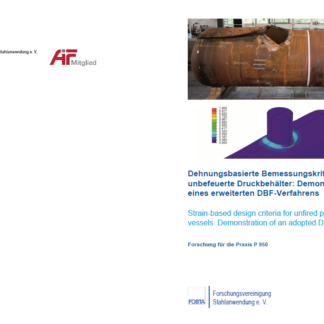Description
P 950 – Strain-based design criteria for unfired pres-sure vessels: Demonstration of an adopted DBF procedure
A significant reduction of material and energy consumption in plant and pressure vessel engineering can be achieved by the application of high strength steels. These allow for example smaller wall thicknesses and reduced welding times. Despite these potential advantages, these steel grades are currently rarely applied. One reason for this is a reduced allowable exploitation rate of the yield strength. It results from high safety factors to be applied on the tensile strength of the material. These are required by the corresponding standards. They prevent the appropriate exploitation of mechanical properties. These requirements are based on previous experiences with common, low strength steel grades. They do not consider the improved toughness properties of modern high strength steels.
Damage mechanics models are able to predict the failure of high strength steels in Finite Element simulations. Probabilistic safety concepts, as e.g. defined in EN 1990, may be used to determine appropriate safety factors for a desired safety level based on full scale failure tests. Combining these two approaches is an innovative option for the derivation of adequate safety factors for high strength steels. Otherwise, the application of probabilistic concept in pressure vessel design is not feasible at all due to the high costs of burst tests.
Within the presented research project a damage mechanics approach for a burst pressure prediction was developed. Additionally, the boundary conditions for its reliable application were investigated. After that this procedure was applied in a multitude of design cases. By this, laborious burst tests could be replaced by simulation results, which were subsequently used for the derivation of new safety factors.
To demonstrate the capabilities of the developed procedure a demonstrator pressure vessel, which consisted of the high strength steel grade P690Q, was designed, produced and tested in a burst test by the researches and members of the project committee. The vessel had a wall thickness of 50 mm, a length of 3 m and an external diameter of 1.2 m. The vessel failed in the burst test at a pressure of 680 bar, which was the triple of the design pressure. The applicability of high strength steels could be clearly demonstrated. The failure took place after significant plastic deformation. The applicability of the developed methodology could therefore be validated.
Finally, probabilistic safety concepts were applied and could demonstrate a significant reduction potential in the current safety factors for high strength steels. The findings will be introduced in the standardization process.
The research project was carried out at Institut für Eisenhüttenkunde und am Institut für Stahlbau der RWTH Aachen University. FOSTA has accompanied the research work and has organized the project funding from the Foundation of Steel Application Research, Essen.
Only available in german language.
Published in:
July 2019




